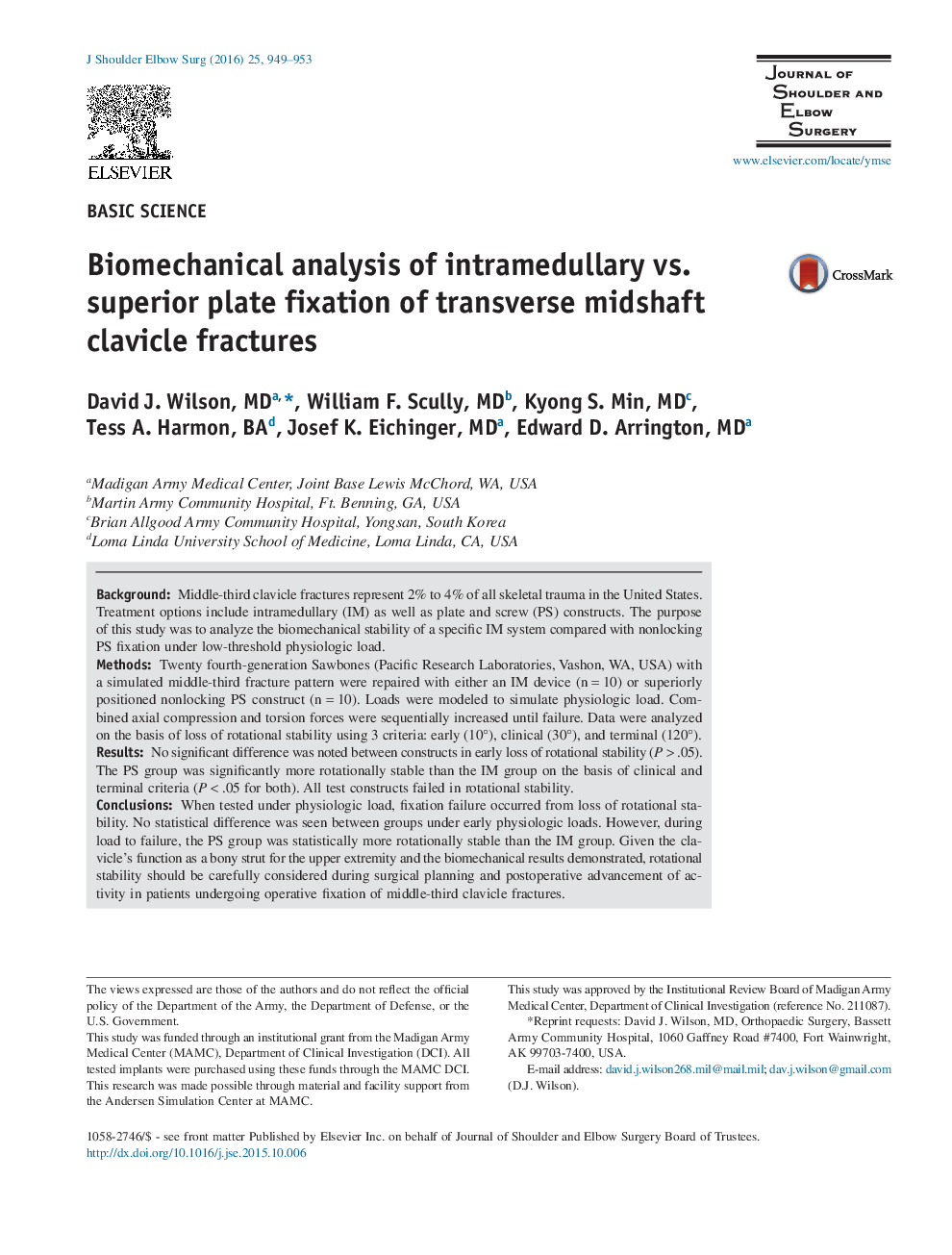| کد مقاله | کد نشریه | سال انتشار | مقاله انگلیسی | نسخه تمام متن |
|---|---|---|---|---|
| 4072872 | 1266964 | 2016 | 5 صفحه PDF | دانلود رایگان |
BackgroundMiddle-third clavicle fractures represent 2% to 4% of all skeletal trauma in the United States. Treatment options include intramedullary (IM) as well as plate and screw (PS) constructs. The purpose of this study was to analyze the biomechanical stability of a specific IM system compared with nonlocking PS fixation under low-threshold physiologic load.MethodsTwenty fourth-generation Sawbones (Pacific Research Laboratories, Vashon, WA, USA) with a simulated middle-third fracture pattern were repaired with either an IM device (n = 10) or superiorly positioned nonlocking PS construct (n = 10). Loads were modeled to simulate physiologic load. Combined axial compression and torsion forces were sequentially increased until failure. Data were analyzed on the basis of loss of rotational stability using 3 criteria: early (10°), clinical (30°), and terminal (120°).ResultsNo significant difference was noted between constructs in early loss of rotational stability (P > .05). The PS group was significantly more rotationally stable than the IM group on the basis of clinical and terminal criteria (P < .05 for both). All test constructs failed in rotational stability.ConclusionsWhen tested under physiologic load, fixation failure occurred from loss of rotational stability. No statistical difference was seen between groups under early physiologic loads. However, during load to failure, the PS group was statistically more rotationally stable than the IM group. Given the clavicle's function as a bony strut for the upper extremity and the biomechanical results demonstrated, rotational stability should be carefully considered during surgical planning and postoperative advancement of activity in patients undergoing operative fixation of middle-third clavicle fractures.Level of evidenceBasic Science Study; Biomechanics
Journal: Journal of Shoulder and Elbow Surgery - Volume 25, Issue 6, June 2016, Pages 949–953
